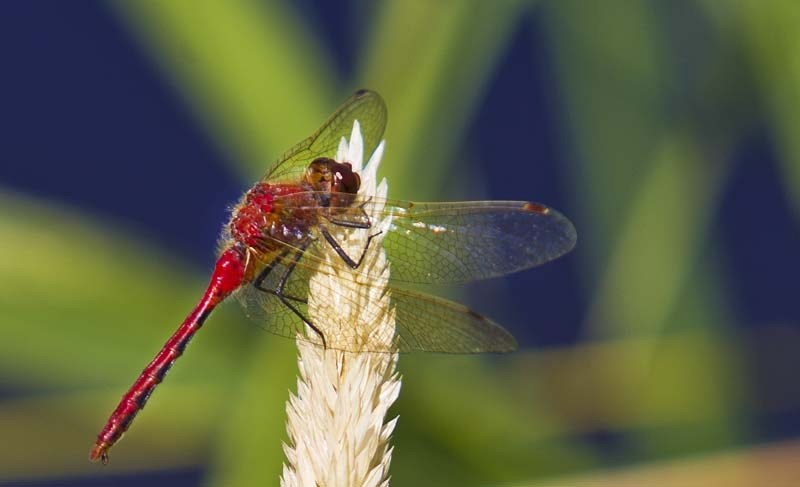It’s hot out there. And so, as I lay awake boiling in my own sweat at 1 a.m. for the umpteenth time, I get to wondering: how do all the critters out there keep from getting cooked?
Turns out they’ve got all kinds of tricks to keep cool in the summer, some of them surprisingly high-tech.
One of the simplest is to simply take a dip into the Sturgeon River, says Bettina Breau, head of the Big Lake Environment Support Society’s Summer Nature Centre, or to lounge around in the shade. Mammals, such as deer, will pant, and shunt hot blood to their poorly insulated ears and feet to use them as radiators.
Many birds naturally keep their bodies at a toasty 40 C, she continues, so our summers are nothing to them. “They’re quite comfy.” Raptors can glide up to cooler parts of the atmosphere, while their smaller, ground-bound victims can breathe faster for more ventilation.
Like ungulates, birds will also send blood to their beaks and extremities to lose heat to their environment. “A bird’s bill size will actually influence how much heat it can lose,” Breau notes, which could explain why the toucan has such a huge one.
But it’s bugs that have some of the most creative methods of keeping cool.
Bumblebees, for example, switch from grabbing pollen to collecting water for evaporative cooling when it gets too toasty, and are known to stand at the entrance to their hives fanning their wings to act like a fuzzy HVAC system.
Dragonflies normally love the heat, as they are ectothermic, but when it gets too warm, they’ll cycle blood to the end of their long bodies and back to give it time to cool, notes entomologist John “the Nature Nut” Acorn. Breau has also seen them relaxing on the grass while flapping their wings to cool off.
Hornets cool off using solar power, electricity, and physics, Breau notes. “They kind of charge up with the sunlight,” she says, and use the power to run a heat pump in their bodies.
Back around 2003, Israeli scientists filmed hornets with a thermal camera and discovered that the bugs were somehow cooler than their surroundings despite not having any sweat glands. Closer study found that the hornet’s bodies somehow acted as a thermoelectric heat pump, converting sunlight into electricity to create a voltage difference that let them move heat from one place to another. Humans use a similar technique to make portable coolers and dehumidifiers work.
While wild animals can generally take the heat, domestic pets often cannot. “Picture yourself wearing a fur coat in the summertime,” says the Edmonton Humane Society’s Shawna Randolph. “If it’s hot for you wearing shorts, you know it must be ten times hotter for your pet wearing a fur coat.”
Cats and dogs rely on panting to keep cool, and there are limits to its effectiveness. Shut them in a car, Randolph notes, and their hot breath has nowhere to go, so they roast. “Never leave your pet unattended in a vehicle.” If you’re leaving them outdoors, make sure they have plenty of water and shade in your absence.
A pet that’s overheating will seem lethargic, have glazed eyes, plenty of drool and a dark purple tongue. “At that point, you really do need to get your pet to a veterinarian as soon as possible.”
Iced water and kiddie pools can also help pets chill out, Randolph says, provided they are supervised in the use of both. And if it’s hot enough to fry an egg on the pavement, imagine what it’s doing to your pet’s bare feet. Small boots, similar to the ones some pets use during the winter, can protect your pet from injuries.
As for myself, when it’s too hot out and the fan doesn’t cut it, I fall back on the same technique a lot of you probably use: I turn on the air conditioner.



